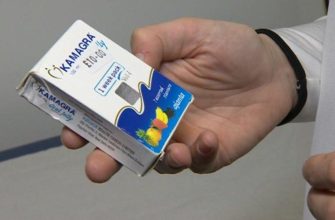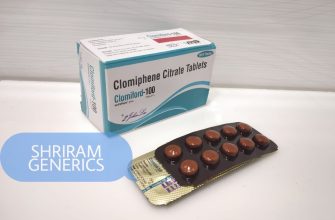Struggling with persistent nasal congestion and allergy symptoms? Beclomethasone dipropionate nasal spray might be the solution you’ve been seeking. This corticosteroid nasal spray works directly in your nasal passages to reduce inflammation, offering targeted relief from rhinitis and related discomforts. It distinguishes itself from some over-the-counter decongestants by addressing the underlying cause of your symptoms, rather than just masking them temporarily. By targeting inflammation, beclomethasone helps shrink swollen nasal tissues and reduce mucus production, allowing you to breathe more freely and feel more comfortable.
Using beclomethasone effectively requires understanding proper technique. We’ll guide you through the correct way to prime the pump, aim the nozzle, and administer the spray to maximize its benefits. Consistency is key; using the spray daily, even when you feel better, helps maintain a therapeutic level in your nasal passages and prevent symptoms from returning. Typical adult dosage is usually one or two sprays in each nostril once or twice a day, but it’s paramount to consult with your doctor for individualized advice. Moreover, you can anticipate seeing some results within several days of initiating treatment, though the full effect may take up to two weeks.
While beclomethasone offers significant relief, it’s wise to be informed about possible side effects. Common reactions include nasal irritation, dryness, or a mild sore throat. Rarely, nosebleeds can occur. More serious side effects are uncommon but need immediate medical attention. If you experience changes in vision, signs of an infection, or severe allergic reactions, consult your healthcare provider right away. Finally, it is generally recommended to avoid using beclomethasone spray if you have an untreated nasal infection or recently had nasal surgery.
- Beclomethasone Dipropionate Nasal Spray: A Comprehensive Guide
- Proper Spray Technique
- Managing Side Effects
- What Is Beclomethasone Nasal Spray Used For?
- Managing Allergy Symptoms
- Using for Nasal Polyps
- How To Use Beclomethasone Nasal Spray Correctly?
- Possible Side Effects of Beclomethasone Nasal Spray
- Beclomethasone Nasal Spray: Dosage and Administration
- Potential Side Effects
- Storage Instructions
- Drug Interactions and Precautions
- Special Populations
- Storage Instructions
- Storing and Disposing of Beclomethasone Nasal Spray
Beclomethasone Dipropionate Nasal Spray: A Comprehensive Guide
Use beclomethasone dipropionate nasal spray precisely as your doctor prescribes. Typically, adults start with one or two sprays in each nostril once or twice daily. Adjust the dosage based on your symptoms and your doctor’s recommendations. Consistent use is key for optimal results. Expect several days, sometimes up to two weeks, before you notice significant improvement.
Proper Spray Technique
Before each use, gently shake the bottle. Clear your nasal passages by blowing your nose gently. Close one nostril with a finger and insert the nozzle into the other nostril, aiming slightly away from the septum (the cartilage dividing your nostrils). Breathe in gently and spray. Repeat in the other nostril. Avoid blowing your nose immediately after spraying to allow the medication to absorb.
Clean the nozzle regularly with warm water. If it becomes clogged, soak it in warm water for a few minutes, then rinse and dry. Never use a pin or sharp object to clear the nozzle, as this can damage it.
Managing Side Effects
Common side effects include nasal irritation, dryness, sneezing, or nosebleeds. Reduce these by using a saline nasal spray to moisturize the nasal passages. If side effects persist or worsen, consult your doctor. Rarely, beclomethasone can cause more serious side effects. Immediately contact your doctor if you experience blurred vision, severe headaches, or signs of an allergic reaction, like rash, itching, or swelling.
Inform your doctor about all medications you take, including other nasal sprays, as interactions may occur. While beclomethasone is generally safe, discuss any concerns with your doctor, especially if you have a history of nasal surgery, ulcers, or infections.
Storage instructions: Store the nasal spray upright at room temperature, away from heat and direct light. Keep out of reach of children. Do not use if the seal is broken or the expiration date has passed.
What Is Beclomethasone Nasal Spray Used For?
Beclomethasone nasal spray treats allergy symptoms such as sneezing, runny nose, stuffy nose, and itchy nose. It works by reducing inflammation in the nasal passages. It also helps manage nasal polyps, reducing their size and associated discomfort. If you experience seasonal allergies like hay fever, start using beclomethasone nasal spray a few weeks before the allergy season begins for best results. Consistent daily use is key for managing chronic symptoms.
Managing Allergy Symptoms
You can use this medication for a wide range of allergens, including pollen, dust mites, pet dander, and mold. It’s important to shake the bottle gently before each use to ensure you receive a consistent dose. Clean your nasal passages before spraying. Blow your nose gently to clear any congestion. After spraying, avoid sneezing or blowing your nose for a few minutes to allow the medication to absorb properly.
Using for Nasal Polyps
Beclomethasone nasal spray can shrink nasal polyps. Often, you’ll need consistent application for several weeks or months before seeing noticeable improvement. Discuss the potential benefits and limitations with your doctor. Monitor your symptoms regularly and report any adverse effects, such as nosebleeds or persistent nasal irritation.
How To Use Beclomethasone Nasal Spray Correctly?
Before first use, prime the pump. Shake the bottle gently, then remove the dust cap. Hold the bottle upright and point the nozzle away from your face. Press down on the pump several times until a fine spray appears. Re-prime if you haven’t used the spray for several days (e.g., two sprays). This ensures you get the correct dose.
To administer the spray, gently blow your nose to clear your nasal passages. Tilt your head forward slightly. Insert the nozzle into one nostril, aiming it towards the outer side of your nose, not directly at the septum (the center wall of your nose). This helps avoid irritation.
Close the other nostril with your finger. Breathe in gently through your nose while simultaneously pressing down firmly on the pump once to release the spray. Sniff gently to help distribute the medication throughout your nasal passage.
Remove the nozzle and breathe out through your mouth. Repeat the process in the other nostril. Avoid blowing your nose for at least 15 minutes after using the spray. This allows the medication to be absorbed properly.
Clean the nozzle after each use by wiping it with a clean tissue. Replace the dust cap to keep it clean. Store the bottle upright in a cool, dry place, away from direct sunlight and heat.
Proper dosage is vital. Typically, adults use one or two sprays in each nostril once or twice daily. Children’s dosage varies, so always follow your doctor’s instructions precisely. Use it at regular intervals each day for the best result. Expect to experience noticeable symptom improvement within a few days, but it may take up to two weeks for maximum effect.
If you miss a dose, use it as soon as you remember. However, if it’s almost time for your next dose, skip the missed dose and continue with your regular schedule. Don’t double your dose to compensate for a missed one.
Consult your doctor if your symptoms don’t improve after two weeks, or if they worsen. Also, seek immediate medical help if you experience signs of a serious allergic reaction, such as rash, itching/swelling (especially of the face/tongue/throat), severe dizziness, or trouble breathing.
| Possible Side Effects | Management |
|---|---|
| Nasal irritation/burning/stinging | Use saline nasal spray or humidifier. |
| Nosebleeds | Apply gentle pressure to the nostril for 5-10 minutes. |
| Headache | Over-the-counter pain relievers may help. |
| Sore throat | Gargle with warm salt water. |
Always discuss any concerns or unusual side effects with your doctor. They can provide personalized advice and adjust your treatment plan if needed. Remember consistent and correct usage will ensure optimal benefit from the medication.
Possible Side Effects of Beclomethasone Nasal Spray
Watch out for nosebleeds; they can happen. Gently blow your nose to minimize irritation. You might experience a dry or irritated nose or throat. Try using a humidifier to add moisture to the air, especially at night.
Some individuals report a mild burning or stinging sensation in the nose after using the spray. This usually goes away quickly. If it persists or worsens, speak with your doctor or pharmacist. Headaches are also possible, but generally mild. Ensure you are adequately hydrated.
Less common, but significant, is the potential for nasal septum perforation (a hole in the cartilage separating your nostrils). Persistent nasal crusting, bleeding, or whistling sounds when you breathe through your nose could indicate this. Consult your doctor immediately if you notice these symptoms.
Though rare with nasal sprays, beclomethasone is a corticosteroid. Long-term or high-dose use *could* lead to systemic effects, such as slowed growth in children or teenagers. Your doctor will monitor this, particularly in younger patients. Adrenal suppression is also a possibility with prolonged use. Never exceed the prescribed dosage.
Eye problems, like glaucoma or cataracts, are uncommon, but report any changes in vision to your doctor. Allergic reactions are also possible. Signs include rash, itching, swelling (especially of the face, tongue, or throat), severe dizziness, or trouble breathing. Get immediate medical attention if any of these occur.
Always discuss any new or worsening symptoms with your healthcare provider. Proper technique, like directing the spray away from the septum, can help minimize some side effects. Store the spray upright and prime it according to the instructions before each use.
Beclomethasone Nasal Spray: Dosage and Administration
Adults and children 12 years and older typically use two sprays in each nostril once or twice daily. Children aged 6 to 11 usually receive one spray in each nostril twice daily. Always follow the specific instructions provided by your doctor or pharmacist and printed on the product label.
Prime the pump before your first use by shaking the bottle gently and spraying the medication into the air several times until a fine mist appears. If you haven’t used the spray for a week or more, re-prime it with one or two sprays.
To administer the spray, gently blow your nose to clear your nostrils. Close one nostril with your finger and insert the nozzle into the other nostril. Tilt your head slightly forward and keep the bottle upright. Breathe in gently through your nose while pressing the pump to release the spray. Avoid spraying directly onto the nasal septum (the wall between your nostrils). After spraying, gently sniff to distribute the medication. Repeat in the other nostril.
Clean the nozzle regularly with a clean tissue or cloth. Avoid using water, as this can clog the nozzle.
It may take several days for the medication to reach its full benefit. Continue using the spray as directed, even if you don’t feel immediate relief. Contact your doctor if your symptoms do not improve after two weeks.
Potential Side Effects
Common side effects include nasal irritation, dryness, or a sore throat. Nosebleeds can occur, particularly if the spray is aimed directly at the septum. Report any persistent or severe side effects to your doctor.
Storage Instructions
Store beclomethasone nasal spray at room temperature, away from heat and direct light. Keep the bottle tightly closed and out of reach of children.
Drug Interactions and Precautions
Inform your doctor about all medications you’re taking before starting beclomethasone dipropionate nasal spray. Concurrent use with other corticosteroids, whether oral, inhaled, or topical, may increase your risk of systemic side effects like adrenal suppression. Monitor for symptoms such as fatigue, muscle weakness, and dizziness, which could indicate this condition.
Use caution if you have existing nasal infections, including fungal infections. Beclomethasone dipropionate can mask symptoms or worsen the infection. Consult your doctor for appropriate treatment before or alongside nasal spray use.
Individuals with glaucoma or cataracts need regular eye exams during prolonged use, as nasal corticosteroids have been linked to increased intraocular pressure and cataract formation. Report any changes in vision to your healthcare provider immediately.
Special Populations
Discuss the use of this medication with your doctor if you’re pregnant or breastfeeding. The potential benefits need to be carefully weighed against any risks to the fetus or infant. If you do use beclomethasone dipropionate nasal spray, use the lowest effective dose for the shortest duration possible.
Children using nasal corticosteroids require growth monitoring. Long-term use may slow growth rate. Your pediatrician will track your child’s height regularly.
Avoid spraying the medication directly into your eyes. If this happens, rinse your eyes thoroughly with water.
Storage Instructions
Store beclomethasone dipropionate nasal spray upright at room temperature, away from heat and direct sunlight. Keep out of reach of children. Discard the spray after the labeled number of sprays has been used, or after the expiration date, whichever comes first, even if the bottle seems to contain solution.
Storing and Disposing of Beclomethasone Nasal Spray
Store your beclomethasone nasal spray at room temperature, ideally between 68°F and 77°F (20°C and 25°C). Avoid locations with excessive heat or humidity, such as bathrooms or near stoves, to prevent degradation of the medication. Keep the spray tightly closed and out of direct sunlight when not in use.
Always keep the spray out of reach of children and pets. Accidental ingestion can have adverse effects, so secure it in a high or locked cabinet. Before disposing, check the expiration date on the label. Using expired medication might reduce its potency and effectiveness.
If your beclomethasone nasal spray is expired or no longer needed, dispose of it properly. Many communities offer medication take-back programs, allowing you to safely return unused medications to designated locations like pharmacies or collection events. Contact your local waste management service for information about available programs in your area.
If a take-back program isn’t accessible, check the product label or package insert for specific disposal instructions. You can also consult your pharmacist for advice. In most cases, you can safely discard the nasal spray in your household trash. First, remove the label to protect your privacy. Next, mix the medication with an undesirable substance, such as coffee grounds or cat litter, to deter anyone from consuming it accidentally. Place the mixture in a sealed plastic bag before discarding it.






